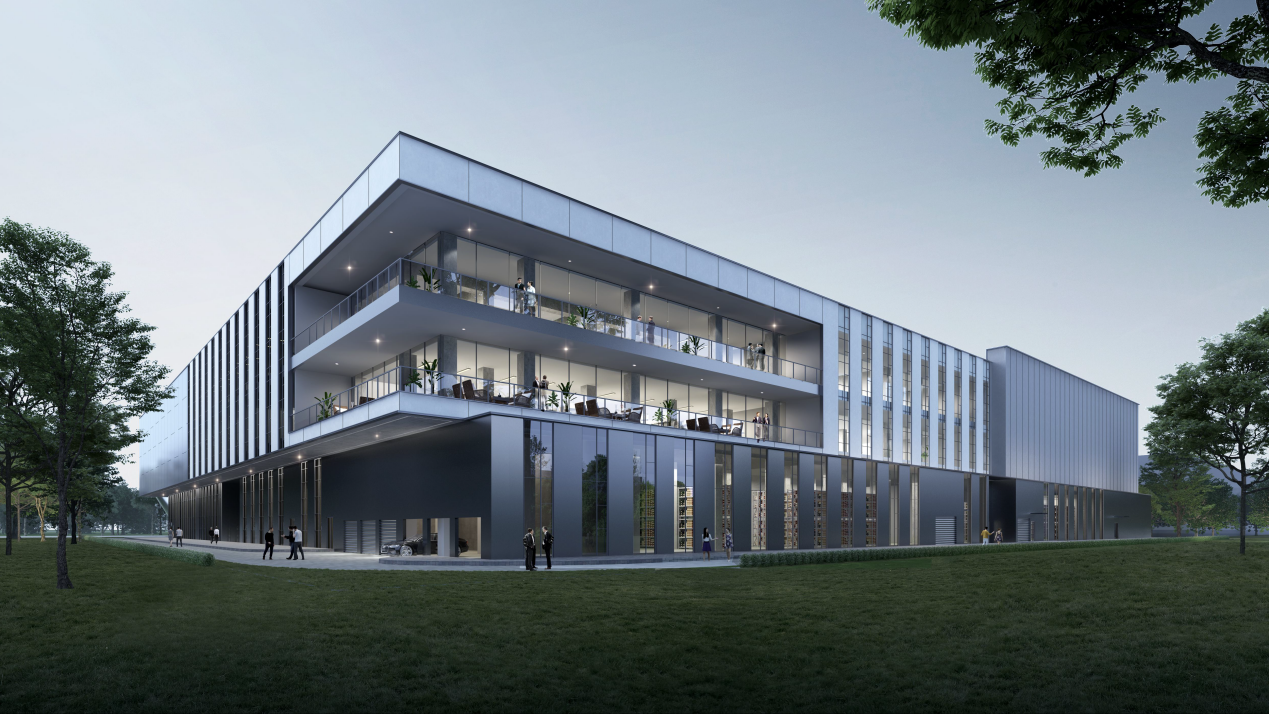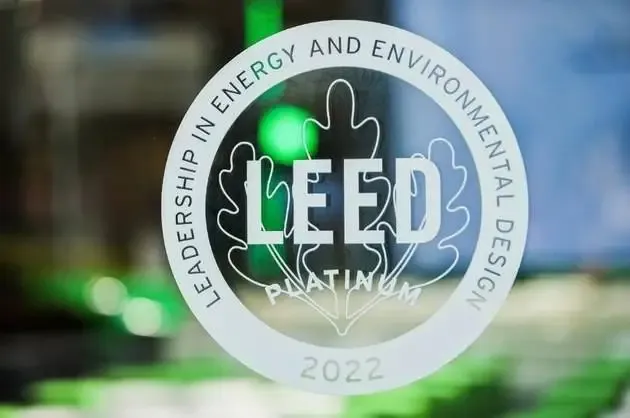Introduction: WELL, A health building certification standard known as the “Oscar” of the architecture industry, originating in the United States, is the world’s first people-oriented building standard that focuses on the work and life of building users. With the iteration of the concept of human settlement, people’s attention to the building itself has risen to care about the feelings of the people in the building, pay more attention to the humanistic care of the building and the construction of living scenes in the community, and focus more on a high understanding of the value of land and the beautiful living experience. As WELL building standards gradually enter everyone’s field of vision, more and more people are paying attention to them, and the problems that come with them will also increase. What are the fees related to WELL certification? What are the advantages of WELL certification? What is the added value of the project? Whether WELL certification will affect the construction period/schedule, what are the healthy green materials that meet WELLWELL standards, and so on, are all issues of concern to industry insiders. Based on this, the editor of Junlv.com has compiled a systematic summary of many hot issues related to WELL certification and provided answers for everyone. Ten questions and ten answers, let me show you clearly. Come and see if there are any answers you want to know~

1.What is “WELL” certification (WELL Building Standard)?
WELL is the abbreviation for WELL Health Building Standard (derived from the Health Building Standard in the United States). WELL is the world’s first building certification standard aimed at improving human health and well-being in indoor environments. WELL’s people-oriented and pursuit of a healthy environment has received enthusiastic responses from outstanding companies around the world.
The WELL Health Building Standard is a building evaluation system that improves human health and well-being through the building environment. Unlike LEED in the United States, BREEAE in the United Kingdom, and DGNB in Germany, all clauses of the WELL Standard are based on promoting human health. The WELL Health Building Standard was established by Delos Corporation and is operated and managed by the International WELL Building Institute (IWBI).
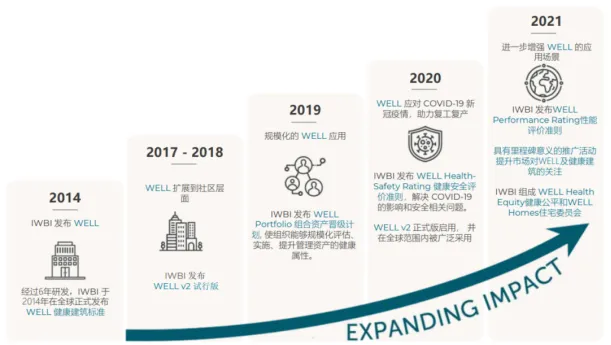
2.WELL scoring and certification level?
The total score calculation rule for WELL:
The prerequisite for scoring is that all prerequisites must be met. The weights of the other preferred options are the same, all Optimization features are treated equally。
Calculation formula: PA/TP=1 and WS=5+(OA/TO) * 5 (rounding down the calculation result)
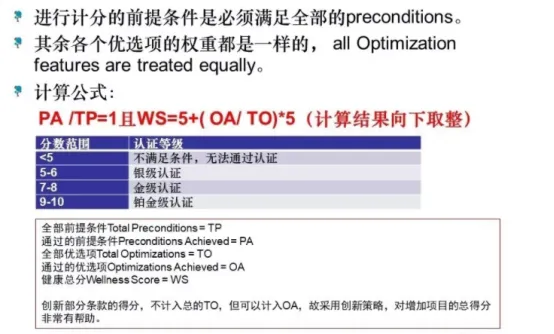
WELL Building System Score Distribution and Composition
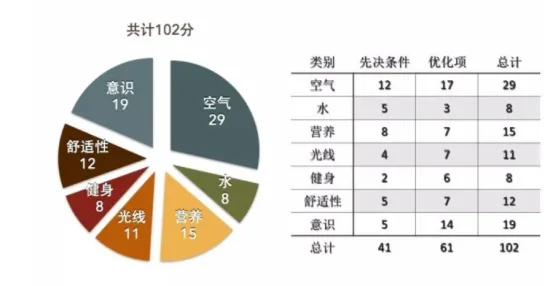
WELL certification comprehensively considers the performance of buildings in terms of air quality, water quality, nutrition, lighting, sports, thermal comfort, sound environment, materials, spirit, and community. The project team needs to selectively use construction techniques based on their own situation to improve the “health performance” of the building.
WELL certification level
The WELL Health Building Evaluation Standard consists of mandatory and scoring items. After meeting all mandatory requirements, obtaining different scoring items can help the project achieve different scores and levels.
According to different scores, it is divided into four levels: copper level, silver level, gold level, and platinum level.
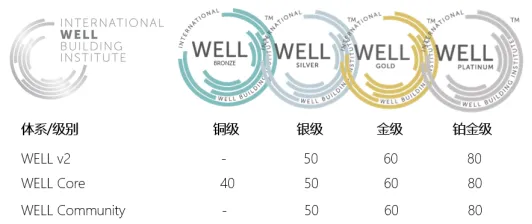
3.What are the advantages of the WELL certification project? What are the impacts on developers and users?
For developers:
Scientificity: Reshaping new standards for healthy housing/office from a multidisciplinary perspective to comprehensively solve problems.
Uniqueness: In an environment of product convergence and market concentration towards first tier cities, it stands out from the encirclement.
Attention: Embark on a new chapter in developer marketing. Customers have a high level of attention to the main scoring items of WELL health certification.
Healthy brand: Build a healthy building brand, change the purchasing concept of developers and users, and establish a good corporate image.
For users:
Healthy lifestyle: Focusing on a healthy environment has a positive impact on the health of users.
High productivity: Enhance user energy and work quality, improve productivity.
Happiness: Enhance satisfaction and happiness.
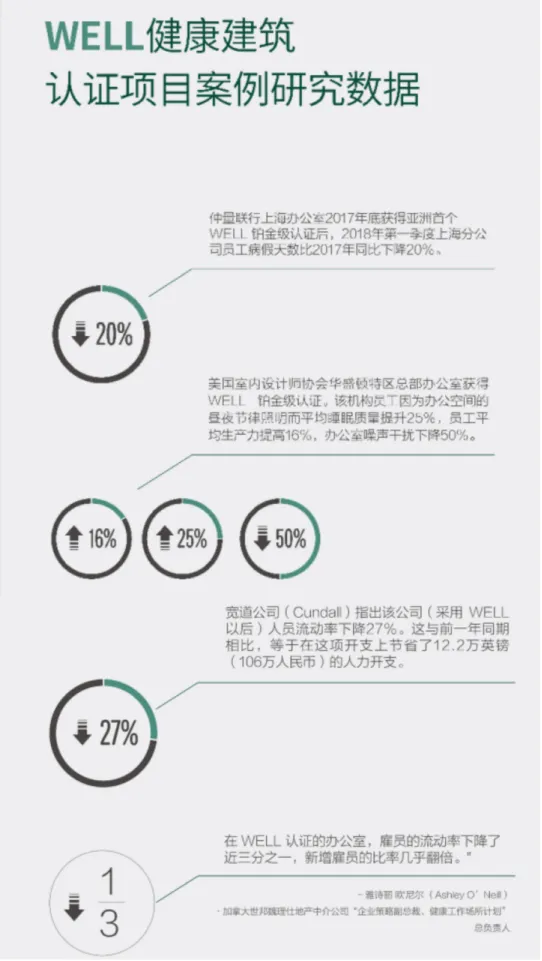
The employees of WELL Certification Office reported that a healthy working environment has brought them considerable happiness. Research has shown that employees working in WELL healthy building spaces experience an overall 10% improvement in health status, a 5% decrease in absenteeism, a 5% improvement in work performance, a 6% increase in optimal working hours, a 24% decrease in sick attendance, a 60% decrease in medical expenses, and a 20% decrease in hospital utilization. Enterprises that utilize WELL healthy buildings also demonstrate outstanding performance in terms of venue rental, employee retention rate, and ESG.
- The core concept of WELL building standards?
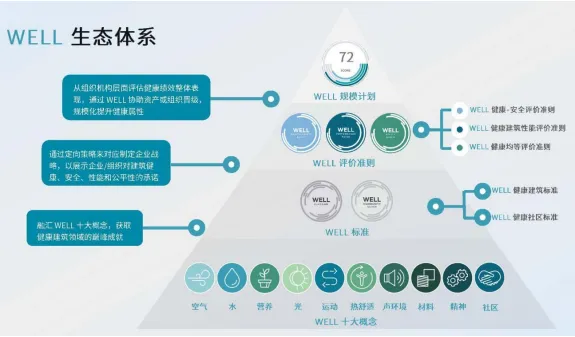
WELL certified ecosystem and top ten concepts
The WELL standard is a performance-based evaluation system that includes over 100 health and well-being strategies based on science and evidence. It measures, certifies, and monitors the building environment characteristics that affect human health and well-being, such as air, water, nutrition, light, health, materials, comfort, and spirituality. It continuously adjusts the quality of building spaces to create a healthier and more comfortable experience for people. Comprehensively solving residential health problems, known as the “Oscar” of the architecture industry.
5.Where is the standard for “WELL” certification used?
WELL certification is a performance-based system that explores the relationship between buildings and the health of their occupants, reshapes building standards, and comprehensively addresses residential health issues. WELL focuses more on the health of the internal environment of buildings and the living life of residents, therefore its emphasis is on ‘people’.
The scope of application of its building standards includes: new and existing buildings, interior of new and existing buildings, core and shell. In addition, WELL has also launched trial standards, which are applicable to multi family residential buildings, education, retail, restaurants, and commercial kitchens.
6.What is the system and scope of WELL certification?
To qualify for registration under the WELL Health Community Standards, the project must meet at least two of the following conditions:
- Plan for 500 or more people during the day or night.
- The total construction area of the planned project is equal to or greater than 50000 square meters or more.
- The total number of buildings planned for the project is 10 or more.
The total land area is 2 hectares or more.
In addition, the WELL Health Community Standards are specifically designed for comprehensive and mixed function development projects, therefore, the project must also include at least two of the following:
- Multi family residence: at least one building with five or more units.
- Office and/or retail: at least one space with 5 or more employees.
- Public entertainment or leisure: open from morning till evening, at least 0.4 hectares, consisting of one or more spaces, each space of at least 0.02 hectares.
7.WELL certification process?
WELL certification includes registration, document review stage, and on-site performance verification stage. The specific workflow for WELL building certification and WELL community certification is mainly as follows:
WELL Building Certification: Registered under the WELL V2 system, mid-term certification can be applied for. After registration, complete performance verification within 5 years; When submitting the document, the project has already been completed; The project has already been put into operation during performance verification; After passing the performance verification audit, obtain WELL building certification; Performance verification can be carried out by local testing agencies accredited and approved by IWBI and the Green Building Certification Institute (GBCI).
WELL Community Certification: Registered under the WELL V1 system, you can apply for mid-term certification. Complete document submission within 5 years after registration; When submitting the document, the community has already been built and occupied; After registration, complete performance verification within 10 years; After passing the performance verification audit, obtain WELL community certification; Performance validation can be conducted by the project itself or by local testing agencies recognized and approved by IWBI and GBCI.
WELL certification applies to all types of buildings, including new and existing ones, communities, and even cities.
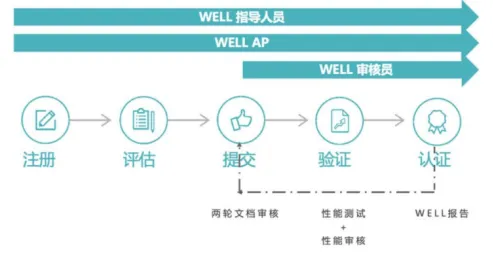
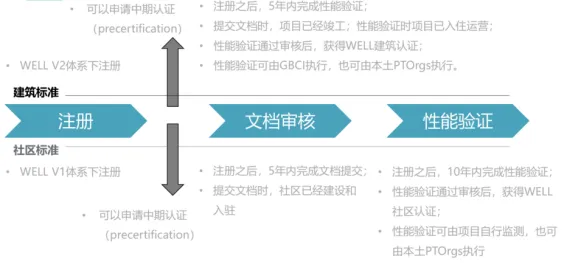
8.What are the fees related to WELL certification?
Taking commercial office buildings as an example, the total cost of registration fees, certification fees, and WELL commissioning fees added together does not exceed an average of $100 per employee.
1) Registration fee
When registering a project, a registration fee must be paid, ranging from $1500 to $10000.
2) Debugging
WELL debugging costs a minimum of approximately $4000, ranging from $0.08 to $0.23 per square foot, depending on the project type and size.
3) Re certification
The re certification fee is at least $1450, with a unit price ranging from $0.03 to $0.07, depending on the project area and type.
9.How to determine which materials are healthy materials that meet WELL standards?
As an assessment of “material” health, strict restrictions are imposed from the source of materials, and materials that meet WELL’s health and environmental protection standards are used. At the 2023 International Health Habitat Festival press conference, Zhang Weishun, Vice President of IWBI China, announced the launch of Works with WELL (Authorized Licensing Program).
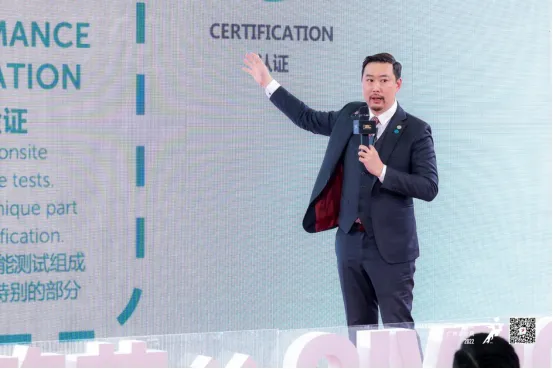
Works with WELL (hereinafter referred to as WwW) is the latest product licensing program launched by IWBI, aimed at enabling manufacturers to demonstrate the consistency of their products with the provisions of WELL building standards, providing a visual basis for their health contributions in creating indoor environments. Manufacturers select products that require licensing and submit materials for these products (such as product testing reports, product descriptions, etc.). IWBI will review the materials submitted by manufacturers to verify whether the products comply with the terms of WELL Health Building Standards. Products reviewed by IWBI will be displayed on a dedicated page and linked to product details on the IWBI official website, maximizing the association between WwW products and WELL. The product can also use its WwW logo and exclusive QR code on its packaging to highlight its health attributes.
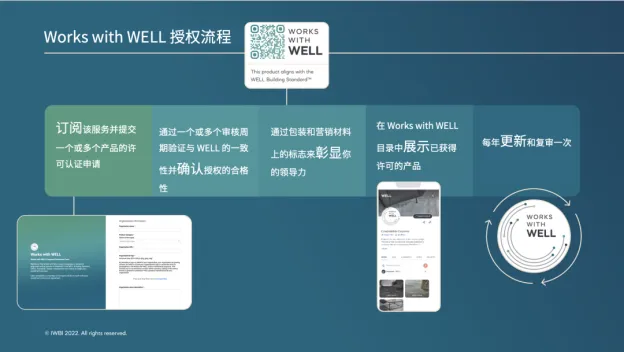
Works with WELL (Licensing Program) Product Licensing Process
In recent years, the persistence of the epidemic has changed the concept of national housing values, with a greater focus on the health attributes of residential properties. Several leading real estate companies have elevated green and healthy development to an important position in product strength, and have implemented healthy building product practices around the WELL health building standard. The launch of Works with WELL will help product manufacturers provide a pathway for product authorization and licensing, as well as provide standard references for real estate companies when choosing healthy products, simplify the screening process, and jointly contribute to the common goal of healthy living.
10.Future Development Trends of WELL
People are the soul of architecture. The continuous evolution of architecture is actually a constant innovation in the way architecture interacts with people. We will comprehensively deploy health strategies and measures, actively implement the national strategic deployment of Healthy China, blend tradition and modernity, and create a closer connection between buildings and the people inside, which will lead the future of healthy living.
WELL has been in the Chinese market for six years now. During this period, WELL’s urban territory has continued to expand, gradually radiating from super first tier cities such as Beijing, Shanghai, Guangzhou, and Shenzhen to first and second tier cities, illuminating more and more regions. In this process, we have seen more and more enterprises, organizations, and institutions begin to recognize the WELL certification and evaluation system, incorporating WELL into the design, construction, and management of their projects throughout their entire lifecycle. By applying quantifiable, experiential, and verifiable standards to projects, they aim to achieve people’s health and well-being more widely, providing employees and visitors with healthier, more comfortable, and safer indoor spaces and community environments.
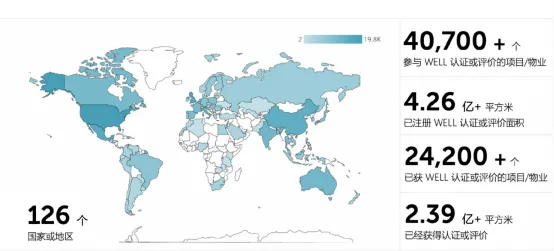
WELL Global Data (data as of March 9th)
As the world’s first building measurement system that enhances people’s health and happiness through the built environment, the WELL Health Building Standard has shown the future development of the construction industry through WELL certified buildings. More and more countries and regions have joined WELL certified projects. According to the WELL Building Institute (IWBI) statistics, since its release in 2014, nearly 400 million square meters of projects have joined the WELL movement worldwide. As of March 9th, over 426 million square meters and 24200+projects have been certified in 126 countries or regions worldwide.
Jungreen’s viewpoint:
The WELL standard has been in China for 6 years, and after several years of preparation, WELL certification has gradually entered an explosive period, covering all business formats, including residential, commercial buildings, supermarkets, gyms, and even healthy cities. The overall construction industry has a high recognition of the standard, and WELL certification has great potential for development in the blue ocean. In the future, whether it is the multi-point blooming of “WELL” system certified products or the leading and breaking of the value of building health, a new era of “building health” will be opened.

